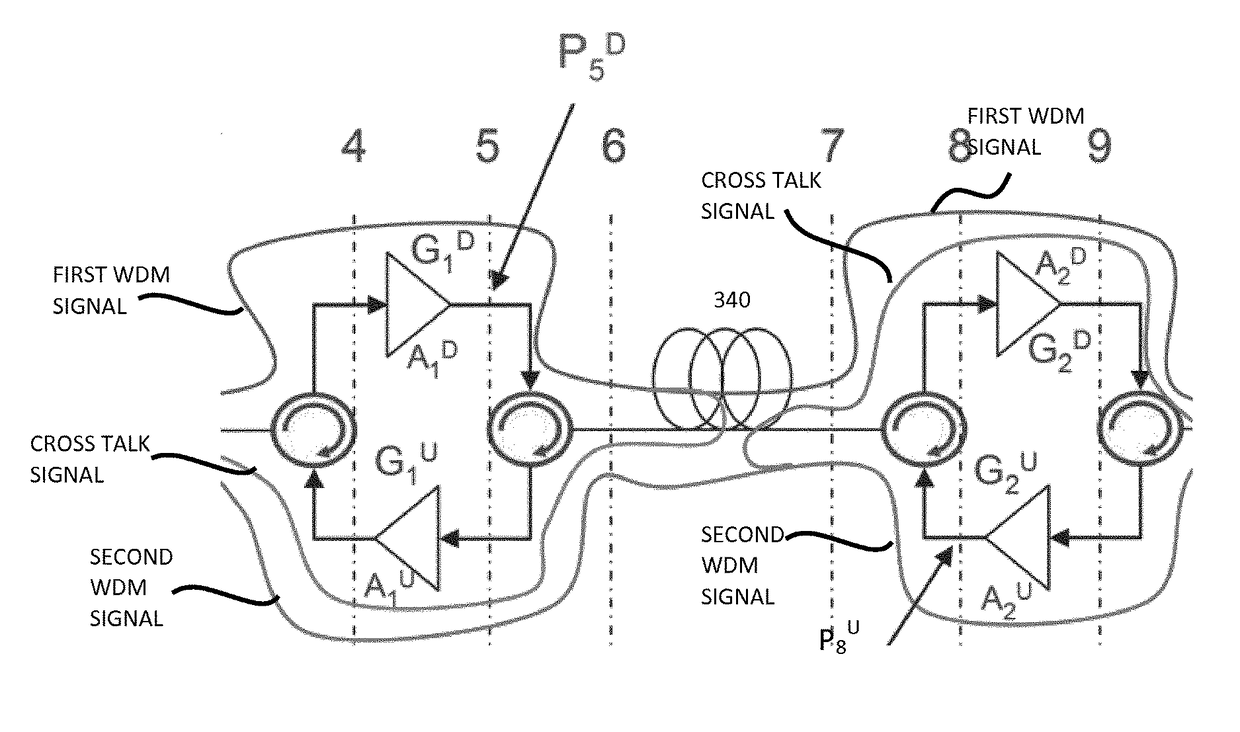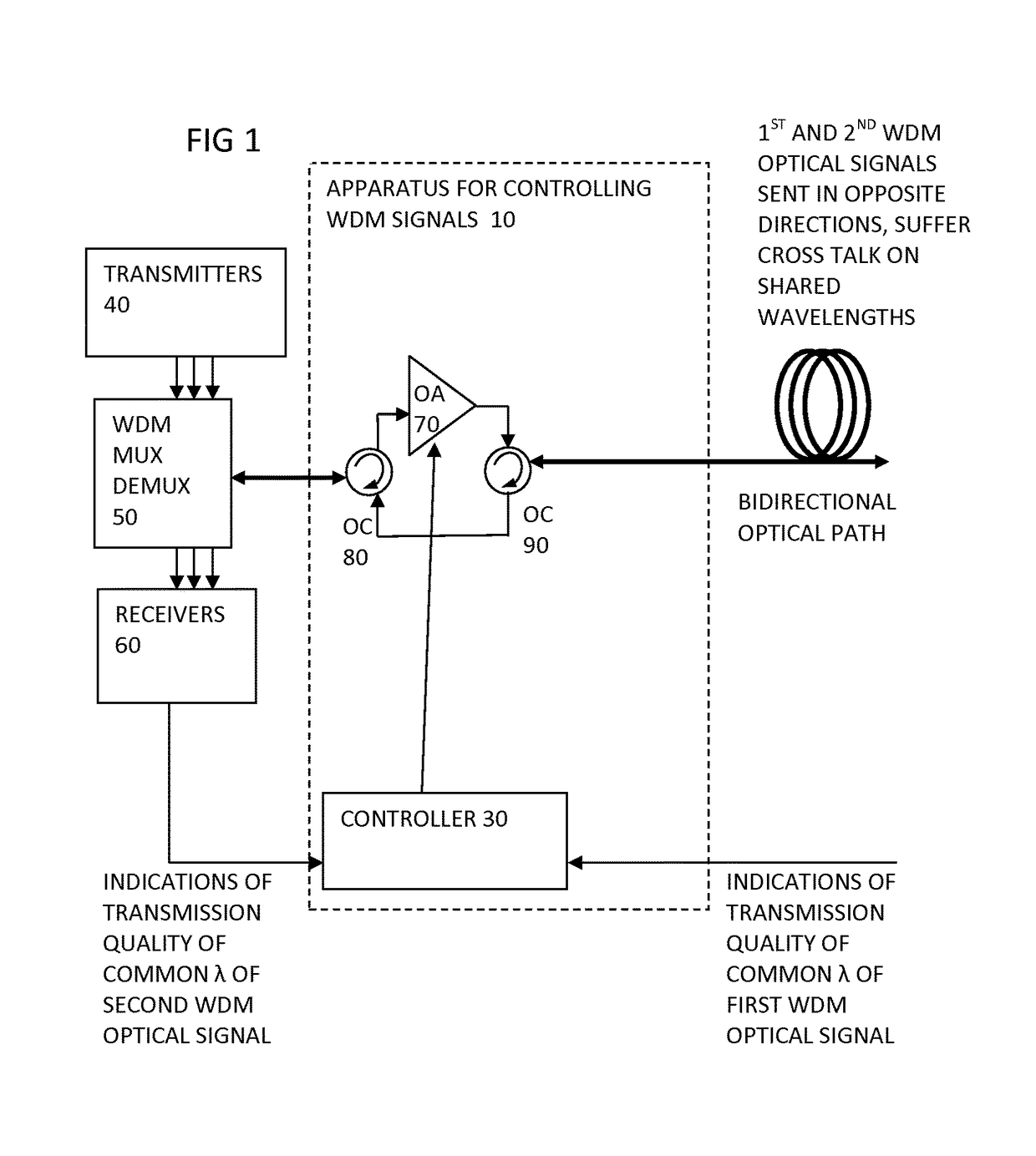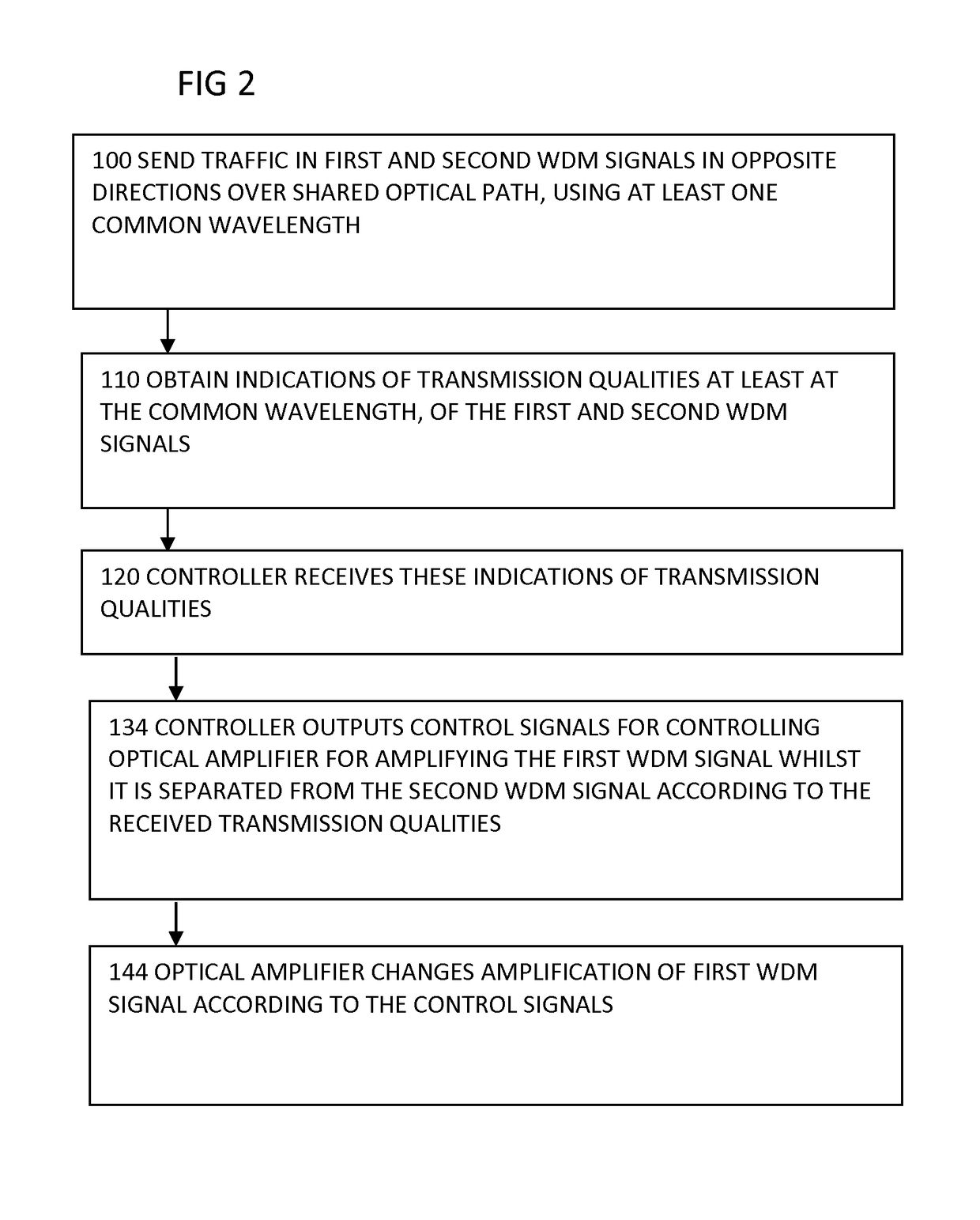Power control in bidirectional WDM optical link
a power control and optical link technology, applied in electromagnetic transmission, wavelength-division multiplex systems, multi-component communication, etc., can solve problems such as difficult to control cross-talk, difficult to achieve cross-talk control, and difficult to achieve the effect of improving signal-to-noise ratio, improving transmission quality, and controlling cross-talk in both directions
- Summary
- Abstract
- Description
- Claims
- Application Information
AI Technical Summary
Benefits of technology
Problems solved by technology
Method used
Image
Examples
Embodiment Construction
[0043]The present invention will be described with respect to particular embodiments and with reference to certain drawings but the invention is not limited thereto but only by the claims. The drawings described are only schematic and are non-limiting. In the drawings, the size of some of the elements may be exaggerated and not drawn to scale for illustrative purposes.
ABBREVIATIONS
AWG Array Waveguide Gratings
BER Bit Error Rate
BIDI-OA Bidirectional Optical Amplifier
EDFA Erbium Doped Fiber Amplifier
Optical Circulator
OLT Optical Line Termination
ONT Optical Network Termination
OSXR Optical Signal to cross-talk Ratio
PON Passive Optical Network
RBS Rayleigh Backscatter
RIN Relative Intensity Noise
RN Remote Node
RX Receiver
TX Transmitter
Xtalk Cross-talk
WDM Wavelength Division Multiplexing
WR Wavelength reuse
DEFINITIONS
[0044]Where the term “comprising” is used in the present description and claims, it does not exclude other elements or steps and should not be interpreted as being restricted to t...
PUM
 Login to View More
Login to View More Abstract
Description
Claims
Application Information
 Login to View More
Login to View More - R&D
- Intellectual Property
- Life Sciences
- Materials
- Tech Scout
- Unparalleled Data Quality
- Higher Quality Content
- 60% Fewer Hallucinations
Browse by: Latest US Patents, China's latest patents, Technical Efficacy Thesaurus, Application Domain, Technology Topic, Popular Technical Reports.
© 2025 PatSnap. All rights reserved.Legal|Privacy policy|Modern Slavery Act Transparency Statement|Sitemap|About US| Contact US: help@patsnap.com



